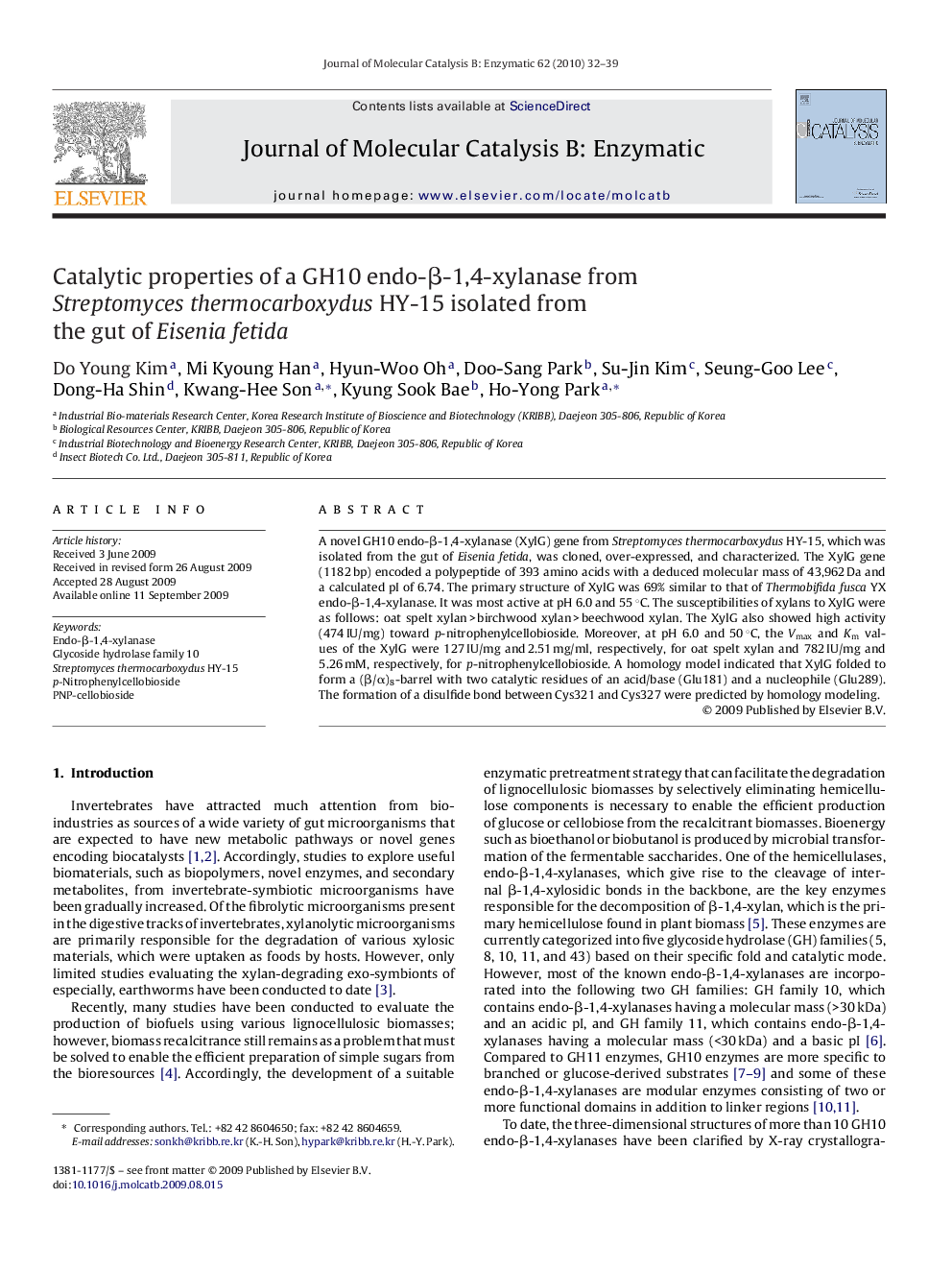| Article ID | Journal | Published Year | Pages | File Type |
|---|---|---|---|---|
| 70659 | Journal of Molecular Catalysis B: Enzymatic | 2010 | 8 Pages |
A novel GH10 endo-β-1,4-xylanase (XylG) gene from Streptomyces thermocarboxydus HY-15, which was isolated from the gut of Eisenia fetida, was cloned, over-expressed, and characterized. The XylG gene (1182 bp) encoded a polypeptide of 393 amino acids with a deduced molecular mass of 43,962 Da and a calculated pI of 6.74. The primary structure of XylG was 69% similar to that of Thermobifida fusca YX endo-β-1,4-xylanase. It was most active at pH 6.0 and 55 °C. The susceptibilities of xylans to XylG were as follows: oat spelt xylan > birchwood xylan > beechwood xylan. The XylG also showed high activity (474 IU/mg) toward p-nitrophenylcellobioside. Moreover, at pH 6.0 and 50 °C, the Vmax and Km values of the XylG were 127 IU/mg and 2.51 mg/ml, respectively, for oat spelt xylan and 782 IU/mg and 5.26 mM, respectively, for p-nitrophenylcellobioside. A homology model indicated that XylG folded to form a (β/α)8-barrel with two catalytic residues of an acid/base (Glu181) and a nucleophile (Glu289). The formation of a disulfide bond between Cys321 and Cys327 were predicted by homology modeling.
